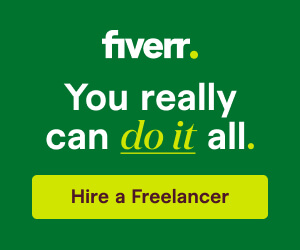Every entrepreneur faces the same dilemma when it comes to AI tools: Should you stick with free options or invest in premium versions? The market is flooded with both, but not all paid tools justify their cost, and some free ones are surprisingly powerful. After testing dozens of AI solutions across different business functions, we’ve identified where free tools fall short—and where paying up actually makes sense.
The Free AI Trap: When “No Cost” Comes at a Price
Free AI tools are enticing, but they often come with hidden limitations. Many restrict usage through tight API call quotas, stripped-down features, or watermarked outputs that undermine professionalism. For example, free-tier transcription tools may cap monthly minutes, forcing you to manually stitch together multiple files. Others, like design AIs, lock advanced editing behind paywalls, leaving you with generic templates that don’t stand out.
Yet some free tools are shockingly capable. Claude Instant handles complex business communication nearly as well as paid alternatives, and Canva’s Magic Studio offers enough design flexibility for most early-stage startups. The key is knowing which free tools can genuinely replace paid ones—and where cutting corners will cost you more in inefficiency later.
Where Free AI Tools Excel (And Where They Don’t)
1. Writing & Communication: Free Can Be Enough
Tools like ChatGPT’s free tier and Poe by Quora are sufficient for drafting emails, generating blog outlines, or conducting preliminary research. However, if your business relies on high-volume content creation—such as SEO-optimized articles or automated customer support—the limitations become apparent. Free versions often lack:
- Custom knowledge bases (uploading internal documents for tailored responses)
- API access for workflow automation
- Advanced plagiarism checks needed for publishing
Paid alternatives like Jasper or Copy.ai offer brand voice consistency and deeper integrations, which matter at scale. But for solopreneurs or small teams, free writing assistants can handle 80% of the workload.
2. Design & Multimedia: Free for Basics, Paid for Polish
Canva’s free AI tools are a godsend for creating social media graphics, simple logos, and presentations. But when you need:
- High-res commercial-use images (free tools often restrict resolution)
- Custom font pairings and brand kits
- AI video editing beyond basic cuts
…that’s where paid tools like Adobe Firefly or Runway.ml justify their cost. The difference is most noticeable in print materials and video production—free tools leave artifacts or lack fine-tuning controls.
3. Data & Analytics: Free Tools Fall Short Fast
Google Sheets with SheetAI’s free version works for basic data sorting, but once you’re dealing with:
- Predictive analytics (forecasting sales, inventory needs)
- Automated reporting dashboards
- CRM integrations for lead scoring
…you’ll hit walls. Paid tools like Tableau or Power BI handle large datasets and real-time updates seamlessly, whereas free alternatives often require manual data stitching.
4. Productivity & Automation: Free for Simple Tasks, Paid for Scalability
Notion AI’s free plan is excellent for personal task management, but teams needing:
- Multi-user collaboration without restrictions
- Advanced database relations
- Version history beyond 7 days
…will need the paid version. Similarly, Zapier’s free tier allows simple automations, but complex workflows with conditional logic require a subscription.
When Paying for AI Actually Makes Sense
Not every business needs premium AI tools, but there are clear scenarios where the investment pays off:
1. You’re Scaling Operations
Free tools often lack the API access needed to integrate with your tech stack. If you’re automating customer onboarding, syncing CRM data, or managing multi-channel marketing, paid tools like Make (formerly Integromat) or HubSpot’s AI features save hours of manual work.
2. Your Business Depends on a Specific AI Output
If AI-generated content, designs, or code are core to your product, free tools won’t cut it. Midjourney’s paid plans offer commercial licenses for AI art, while GitHub Copilot’s subscription unlocks full code suggestions—critical for developers.
3. Data Privacy & Compliance Matter
Many free AI tools train on your inputs, risking sensitive data exposure. Paid alternatives like Salesforce Einstein or IBM Watson often include enterprise-grade security, crucial for legal, healthcare, or financial businesses.
4. You Need Priority Support & Reliability
Free tiers are the first to suffer during outages or high traffic. Paid plans usually guarantee uptime and faster customer support—essential if AI is mission-critical for your operations.
The Verdict: A Hybrid Approach Wins
The smartest strategy isn’t all-free or all-paid—it’s a mix. Use free tools for experimentation and low-stakes tasks, then upgrade only where the ROI is clear. For example:
- Free: Claude Instant for emails, Canva for quick designs, Otter.ai for meeting notes
- Paid: Midjourney for commercial artwork, Zapier for complex automations, Tableau for deep analytics
This way, you maximize value without overcommitting budget prematurely. As AI evolves, reassess every six months—what was once a paid necessity may become freely available, and vice versa.
The bottom line? Pay for AI when it directly drives revenue, saves disproportionate time, or mitigates risk. Otherwise, the free alternatives in 2025 are robust enough to get most entrepreneurs started.








